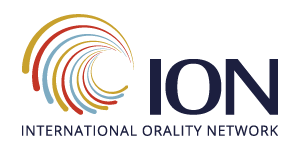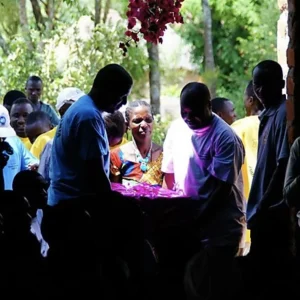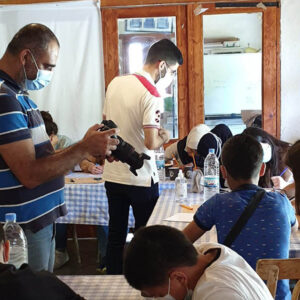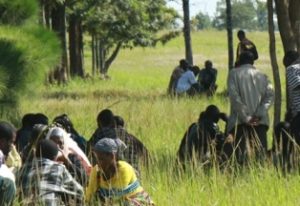 HOUSTON, TX (ANS – February 20, 2017) — I first came across the book “Oral Communication of the Scriptures: Insights from African Oral Art” by Herbert Klem, and started hearing about Orality, Oral Cultures and Oral Learners back in the 1980s. It was a seemingly obscure conversation among a few missionaries, mission leaders and cross-cultural scholars at that time. I began reading and researching on the topics, but there was not a lot available in those days. Little did anyone know at that time that it was the beginning of a very significant paradigm shift in the global church and mission movements.
HOUSTON, TX (ANS – February 20, 2017) — I first came across the book “Oral Communication of the Scriptures: Insights from African Oral Art” by Herbert Klem, and started hearing about Orality, Oral Cultures and Oral Learners back in the 1980s. It was a seemingly obscure conversation among a few missionaries, mission leaders and cross-cultural scholars at that time. I began reading and researching on the topics, but there was not a lot available in those days. Little did anyone know at that time that it was the beginning of a very significant paradigm shift in the global church and mission movements.
In recent times, mission executives, global church leaders and missiologists have come to recognize that the Orality Movement is one of the most significant breakthroughs in church planting, disciple making and mission strategies that has taken place in the past 500 years. With the increased awareness and understanding of Orality, and topics such as communication and learning theory, behavior change, cross-cultural issues and honor/shame dynamics, ministry and mission leaders are discovering the many applications of Orality concepts, principles and practices.
In the 1980s, when a few missionaries and church planters were beginning to use Chronological Bible Teaching (later Chronological Bible Storying) and other Oral Learner friendly methods, it was primarily related to evangelism, sharing the Gospel and some disciple-making efforts. Over the years since those days, there has emerged a global community of learning and practice around the Orality Domain.
From the many conversations I have had over the years, and still have, about Orality, storytelling and other Oral arts, I have often heard people say something like, “Do you know about ….?” or, “Have you heard of ….?” Then they go on to tell about someone or an organization that is doing something similar, but using unique methods or models. Such cross-pollination has resulted in an amazing learning journey, and it continues to grow and build.
 Since the formation of the International Orality Network in 2004, with about 30 organizations, ION has grown to more than 2,000 member organizations and groups, and continues to grow. In addition to the ION, we continue to discover other individuals and church/mission organizations that are on the Orality learning journey.
Since the formation of the International Orality Network in 2004, with about 30 organizations, ION has grown to more than 2,000 member organizations and groups, and continues to grow. In addition to the ION, we continue to discover other individuals and church/mission organizations that are on the Orality learning journey.
Recently, as strategic initiatives of ION, there has been the formation of the Orality in Business Network, which is connecting and collaborating with the Business as Mission Movement and others. Also, the newly formed International Society for Orality Missiology is working to assist seminaries and other academic institutions in creating Orality Study Programs. The members of the ISOM are also mentoring and coaching doctoral students doing dissertations on Orality and related topics.
On this Orality learning journey, we get feedback and discover how those who have received Orality Training are able to exercise some creativity and innovation and apply their learning in many different contexts. In addition to communicating the Gospel, making disciples and church planting, there are numerous other applications. For example, Orality methods are effective in trauma therapy, racial reconciliation, conflict management, addressing issues of social justice, integral mission and many other areas.
Whether it’s in the bush in West Africa, remote regions in Central Asia, the Amazon Basin in South America, or even on university campuses and in board rooms in the United States, we are discovering the power of Orality methods everywhere. Using stories, reflection and discussion of any topic usually works better than the typical print-based instruction or communication methods.
 Foundational to maximizing impact would also be the prayer, care, share focus of the Mission America Coalition and its LOVE 2020 initiative. Collaboration with other networks and associations, such as Missio Nexus, the Accord Network, Christian Leadership Alliance, the Honor and Shame Network, to name a few, is an important aspect.
Foundational to maximizing impact would also be the prayer, care, share focus of the Mission America Coalition and its LOVE 2020 initiative. Collaboration with other networks and associations, such as Missio Nexus, the Accord Network, Christian Leadership Alliance, the Honor and Shame Network, to name a few, is an important aspect.
Of the many applications of Orality principles and practices, the end result is about the Great Commission (communicating the gospel and making disciples). Whether it’s sitting in an airport, a waiting room, or encountering a friend or neighbor, asking questions and telling stories are effective methods everywhere. What we learn from the more relational, communal and Oral Cultures in the Global South are valuable lessons that can be applied in the Global North as well.
For a decade now, Living Water International is one of several organizations that have been on the Orality learning journey. In the basic Orality Training, we emphasize that these methods are not intended to take the place of anything else you are doing, but they are additional tools for your mission/ministry tool box. However, after the training, almost without exception, trainees say, “This is better than anything else we have been using.”
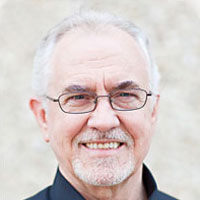 Photo captions: 1) Small, simple reproducible disciple-making cell groups, can work anywhere. 2) The power of conversation. 3) Airport conversations can turn into transformational experiences. 4) Jerry Wiles.
Photo captions: 1) Small, simple reproducible disciple-making cell groups, can work anywhere. 2) The power of conversation. 3) Airport conversations can turn into transformational experiences. 4) Jerry Wiles.
About the writer: Jerry Wiles is President Emeritus of Living Water International and serves on the advisory council and leadership team of the International Orality Network. He can be reached at: [email protected].
« Oralities & Literacies – Chapter 10 &...Oralities & Literacies – Chapter 9 &#...»
